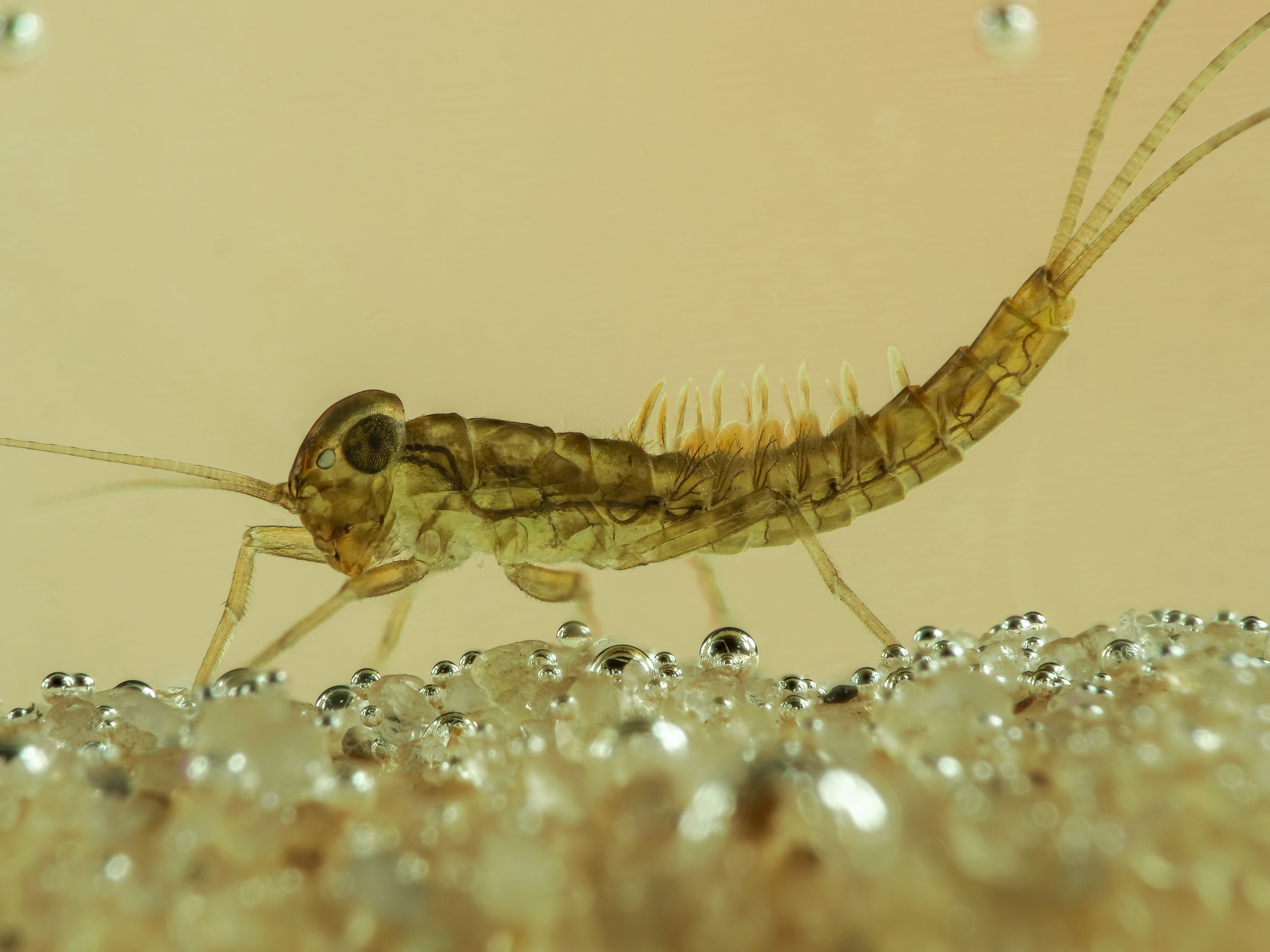
Studies on Hazard and Risk Assessment

Higher tier aquatic risk assessment
Standard tests frequently represent an unrealistic exposure scenario. Especially for strongly adsorbable substances conditions in natural waters can be simulated more reality-like using tests performed in water/sediment systems. Moreover, standard tests usually refer to only one life stage, while natural populations consist of individuals in different development stages. Therefore, we offer tests that allow a more realistic exposure of the test organisms:
- Tests in water - sediment systems or with pulsed exposure and recovery period (e.g. Daphnia and other invertebrates, Lemna and other macrophytes)
- Expanded fish tests, e.g.:
- Exposure of caged fish (e.g. rainbow trouts) in microcosms to assess survival and growth under exposure conditions close to reality.
- Fish Early Life Stage tests with different species.
- In addition to Fish Full Life Cycle Tests with the zebrafish Danio rerio or Medaka we also conduct static flow-through tests in aquaria including sediment. Three different life stages are simultaneously exposed to realistic application patterns and monitored to the next generation.
- Exposure of caged fish (e.g. rainbow trouts) in microcosms to assess survival and growth under exposure conditions close to reality.
- Modified bioaccumulation studies with fish or invertebrates under realistic exposure in water/sediment systems.
Tests with "Non-standard Species"

Moreover, we conduct tests with non standard test species (algae, macrophytes, macroinvertebrates, fish) for probabilistic effect assessments using Species Sensitivity Distributions (SSD).
Further information on SSD with invertebrates:
Species Sensitivity Distributions (SSDs) with invertebrates.
Publication:
Brüggemann, M., Hund-Rinke, K., Böhmer, W. und Schäfers, C.
Development of an Alternative Test System for Chronic Testing of Lotic Macroinvertebrate Species: A Case Study with the Insecticide Imidacloprid.
(2021) Environmental Toxicology. doi.org/10.1002/etc.5070
Refined effect assessment with model ecosystems - microcosms, mesocosms and TMEs
Tests with communities in semi-realistic environments build the highest tier in testing potential effects of plant protection products because they allow testing simultaneously effects on different species including indirect effects due to modified predator-prey or competition relationships. In addition, the recovery potential of affected species can be assessed.
Micro- und mesocosms are well-establised tools in aquatic ecotoxicology and often used for refined risk assessments of pesticides in order to reduce uncertainties in the extrapolation form laboratory standard tests to the situation in the field. In cooperation with gaiac - Research Institute for Ecosystem Analysis and Assessment - in Aachen, and the MESOCOSM GmbH in Homberg, the Fraunhofer IME is one of the international leading providers of such studies with 32 microcosm of 1 m³ at the Fraunhofer site in Schmallenberg, 30 artificial outdoor ponds of 5 m² at gaiac and 5 large artificial ponds to place up to 28 enclosures of 2 m² per pond at Mesocosm GmbH.
Until now, the Fraunhofer IME has conducted approx. 30 GLP- micro- or mesocsom studies.
In a similar way, we can offer studies conducted in Terrestrial Model Ecosystems (TMEs) to analyse effects of pesticides or other chemicals on soil invertebrates. These studies can be conducted in cooperation with gaiac in Schmallenberg or in Aachen. At the Fraunhofer site in Schmallenberg radiolabelled substances can be tested as well.
Selected projects
Selected publications
Hommen, U., Knopf, B., Rüdel, H., Schäfers, C., Schamphelaere, K. de, Schlekat, C., Rogevich Garman, E.:
A microcosm study to support aquatic risk assessment of nickel: community-level effects and comparison with bioavailability-normalized species sensitivity distributions. Environmental Toxicology and Chemistry (2016) Open access, 37 pp.
(DOI: 10.1002/etc.3255)
Brock, T.C.M., Hammers-Wirtz, M., Hommen, U., Preuss, T.G., Ratte, H.-T., Roessink, I., Strauss, T., Brink, P.J. van den:
The minimum detectable difference (MDD) and the interpretation of treatment-related effects of pesticides in experimental ecosystems. Environmental Science and Pollution Research International ESPR 22 (2015) 1160–1174 (DOI: 10.1007/s11356-014-3398-2)
Schäfers, C.:
Ecological approaches to aquatic ecotoxicology challenged by the needs of risk assessment. Fraunhofer IME (Hrsg.), Fraunhofer Verlag, Stuttgart (2013) 200 pp., ISBN 978-3-8396-0542-4 (Download)
Knauer, K., Hommen, U.:
Sensitivity, variability, and recovery of functional and structural endpoints of an aquatic community exposed to herbicides. Ecotoxicology and Environmental Safety 78 (2012) 178–183 (DOI: 10.1016/j.ecoenv.2011.11.019)
Knacker, T., Boettcher, M., Frische, T., Rufli, H., Stolzenberg, H.-C., Teigeler, M., Zok, S., Braunbeck, T., Schäfers, C.:
Environmental effect assessment for sexual endocrinedisrupting chemicals: Fish testing strategy. Integrated Environmental Assessment and Management, Vol. 6 (2010) No. 4: 653 – 662 (DOI: 10.1002/ieam.92)
Belanger, S.E. ; Sanderson, H. ; Fisk, P.R. ; Schäfers, C. ; Mudge, S.M. ; Willing, A. ; Kasai, Y.; Nielsen, A.M. ; Dyer, S.D. ; Toy, R.:
Assessment of the environmental risk of long-chain aliphatic alcohols. Ecotoxicology and Environmental Safety 72 (4) (2009) 1006-1015 (DOI: 10.1016/j.ecoenv.2008.07.013)
Schäfers, C., Boshof, U., Jürling, H., Belanger, S.E., Sanderson, H., Dyer, S.D., Nielsen, A.M., Willing, A., Gamon, K., Kasai, Y., Eadsforth, C.V., Fisk, P.R., Girling, A.E.:
Environmental properties of long-chain alcohols. Part.2: Structure-activity relationship for chronic aquatic toxicity of long-chain alcohols. Ecotoxicology and Environmental Safety 72 (2009) No. 4: 996-1005 (DOI: 10.1016/j.ecoenv.2008.07.019)
Knauert, S., Dawo, U., Hollender, J., Hommen, U., Knauer, K.:
Effects of photosystem II inhibitors and their mixture on freshwater phytoplankton succession in outdoor mesocosms. Environmental Toxicology and Chemistry 28 (2009) 836-845 (DOI: 10.1897/08-135R.1)
Schäfers, C., Teigeler, M., Wenzel, A., Maack, G., Fenske, M., Segner, H.:
Concentration- and time-dependent effects of the synthetic estrogen, 17alpha-ethinylestradiol, on reproductive capabilities of the zebrafish, Danio rerio. Journal of Toxicology and Environmental Health, Pt. A 70, No. 9 (2007) 768-779
(DOI: 10.1080/15287390701236470)
Knauer, K., Maise, S., Thoma, G., Hommen, U., Gonzalez-Valero, J.:
Long-term variability of zooplankton populations in aquatic mesocosms. Environmental Toxicology and Chemistry 24 (2005) 1182-1189 (DOI: 10.1897/04-010R.1)
Giddings, J.M.; Brock, T.C.M.; Heger, W.; Heimbach, F.; Maund, S.J.; Norman, S.M.; Ratte, H.T.; Schäfers, C.; Streloke, M. (eds.):
Community-level aquatic system studies. Interpretation criteria: Proceedings from the CLASSIC Workshop held at the Fraunhofer Institute Schmallenberg, Germany, 30.05.-02-06.1999. SETAC, Pensacola, Fla., 44 pp.; ISBN 1-880611-49-X
 Fraunhofer Institute for Molecular Biology and Applied Ecology IME
Fraunhofer Institute for Molecular Biology and Applied Ecology IME